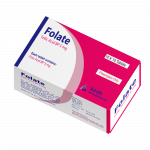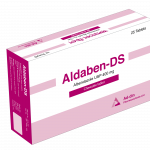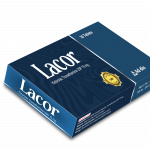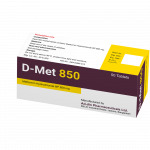Composition
Each 5ml contains Benzoyl Metronidazole equivalent to Metronidazole BP 200mg.
Pharmacology
Metronidazole is a member of the imidazole class of antibacterial drug and is classified therapeutically as an antiprotozoal agent. The 5-nitro group of Metronidazole is reduced by anaerobes metabolically. Studies have demonstrated that the reduced form of this drug interacts with DNA and gives bactericidal action of Metronidazole.
Indication
Metra (Metronidazole) is indicated in the treatment of following diseases:
- The prevention of post-operative infections due to anaerobic bacteria (particularly species of bacteroides and anaerobic streptococci).
- The treatment of septicaemia, bacteraemia, peritonitis, brain abscess, pelvic abscess, pelvic cellulitis and post-operative wound infections caused by anaerobes.
- In the treatment of urogenital trichomoniasis.
- Bacterial vaginosis (also known as non-specific vaginitis).
- All forms of amoebiasis (intestinal, extra-intestinal disease and that of symptomless cyst passers).
- Acute ulcerative gingivitis.
- Anaerobically infected leg ulcers and pressure sores.
- Acute dental infections due to anaerobic organisms.
- Antibiotic associated pseudomembranus colitis.
Dosage & Administration
Trichomoniasis (Adults & Children over 10 yrs)-
200 mg tid or 400 mg bid for 7 days
- 800 mg in the morning and 1-2 gm at night for 2 days
- 2 gm as a single dose for 1 days
Trichomoniasis (Children)-
- Children 7-10 yrs: 100 mg tid
- Children 3-7 yrs: 100 mg bid
- Children 1-3 yrs: 50 mg tid
Intestinal amoebiasis (Adults & Children over 10 yrs)-
- 800 mg tid for 5 days
Intestinal amoebiasis (Children)-
- Children 7-10 yrs: 400 mg tid
- Children 3-7 yrs: 200 mg qid
- Children 1-3 yrs: 200 mg tid
Extra-intestinal & Asymptomatic amoebiasis (Adults & Children over 10 yrs)-
- 400-800 mg tid for 5-10 days
Extra-intestinal & Asymptomatic amoebiasis (Children)-
- Children 7-10 yrs: 200-400 mg tid
- Children 3-7 yrs: 100-200 mg qid
- Children 1-3 yrs: 100-200 mg tid
Giardiasis (Adults & Children over 10 yrs)-
- 2 gm once daily for 3 days
Giardiasis (Children)-
- Children 7-10 yrs: 1 gm once daily
- Children 3-7 yrs: 600-800 mg once daily
- Children 1-3 yrs: 500 mg once daily
Acute ulcerative gingivitis (Adults & Children over 10 yrs)-
- 200 mg tid for 3 days
Acute ulcerative gingivitis (Children)-
- Children 7-10 yrs: 100 mg tid
- Children 3-7 yrs: 100 mg bid
- Children 1-3 yrs: 50 mg tid
Acute dental infections (Adults & Children over 10 yrs)-
- 200 mg tid for 3-7 days
Bacterial Vaginosis (Adults & Children over 10 yrs)-
- 400 mg bid for 7 days
- 2 gm as a single dose for 1 days
Leg ulcers and pressure sores (Adults & Children over 10 yrs)-
- 400 mg tid for 7 days
Anaerobic infections (Adults & Children over 10 yrs)-
- 800 mg initially and then 400 mg tid for 7 days
Anaerobic infections (Children)-
- Children 1-10 yrs: 7.5 mg/kg tid
Surgical prophylaxis (Adults & Children over 10 yrs)-
- 400 mg tid started 24 hours before surgery for 1 days
Surgical prophylaxis (Children)-
- Children 1-10 yrs: 7.5 mg/kg tid
Contraindications
Metronidazole is contraindicated in patients with a history of hypersensitivity to Metronidazole or other Nitroimidazole derivatives.
Precautions
Metronidazole should be given with caution in the following conditions- anaemia or other blood disorders, liver disease, disease of the nervous system, seizures etc.
Side Effects
Metallic taste, nausea, vomiting, diarrhoea, drowsiness, rashes may be observed during treatment.
Use in Pregnancy & Lactation
US FDA Pregnancy Category of Metronidazole is B. There are, however, no adequate and well-controlled studies in pregnant women. Because animal reproduction studies are not always predictive of human response, this drug should be used during pregnancy only if clearly needed. Metronidazole have been shown to be excreted in human milk. So, caution should be exercised when Metronidazole is administered to a nursing woman.
Use in Special Populations
Hepatic impairment: Metronidazole is mainly metabolised by hepatic oxidation. Substantial impairment of metronidazole clearance may occur in the presence of advanced hepatic insufficiency. Significant cumulation may occur in patients with hepatic encephalopathy and the resulting high plasma concentrations of metronidazole may contribute to the symptoms of the encephalopathy. Metronidazole should therefore, be administered with caution to patients with hepatic encephalopathy. The daily dosage should be reduced to one third and may be administered once daily. Patients should be warned that metronidazole may darken urine.
Renal impairment: The elimination half-life of metronidazole remains unchanged in the presence of renal failure. The dosage of metronidazole therefore needs no reduction. Such patients however retain the metabolites of metronidazole. The clinical significance of this is not known at present. In patients undergoing haemodialysis metronidazole and metabolites are efficiently removed during an eight hour period of dialysis. Metronidazole should therefore be re-administered immediately after haemodialysis. No routine adjustment in the dosage of Metronidazole need be made in patients with renal failure undergoing intermittent peritoneal dialysis (IDP) or continuous ambulatory peritoneal dialysis (CAPD).
Drug Interaction
- Disulfiram: Psychotic reactions have been reported in patients who were using metronidazole and disulfiram concurrently.
- Alcohol: Alcoholic beverages and drugs containing alcohol should not be consumed during therapy and for at least one day afterwards because of the possibility of a disulfiram-like (antabuse effect) reaction (flushing, vomiting, tachycardia). Oral anticoagulant therapy (warfarin type): Potentiation of the anticoagulant effect and increased hemorrhagic risk caused by decreased hepatic catabolism. In case of co-administration, prothrombin time should be more frequently monitored and anticoagulant therapy adjusted during treatment with metronidazole.
- Lithium: Plasma levels of lithium may be increased by metronidazole.
- Cyclosporin: Serum cyclosporin and serum creatinine should be closely monitored when co-administration is necessary.
- Phenytoin or phenobarbital: increased elimination of metronidazole resulting in reduced plasma levels.
- 5-Fluorouracil: Reduced clearance of 5-fluorouracil resulting in increased toxicity of 5-fluorouracil.
- Busulfan: Plasma levels of busulfan may be increased by metronidazole, which may lead to severe busulfan toxicity.
Overdose
Single oral doses of metronidazole, up to 12 g have been reported in suicide attempts and accidental overdoses. Symptoms were limited to vomiting, ataxia and slight disorientation. There is no specific antidote for metronidazole overdosages. In case of suspected massive overdosages, a symptomatic and supportive treatment should be instituted.
Storage
Store below 30°C, protect from light and moisture. Keep out of reach of children.
Packaging
Each Bottle contains 60ml suspension with a measuring cup.






